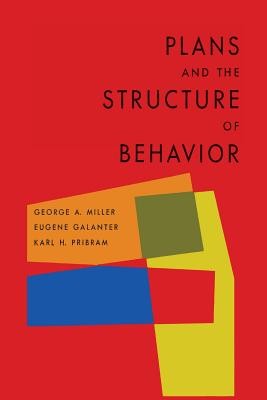
- We will send in 10–14 business days.
- Author: George a Miller
- Publisher: Martino Fine Books
- ISBN-10: 1614275203
- ISBN-13: 9781614275206
- Format: 15.6 x 23.4 x 1.4 cm, softcover
- Language: English
- SAVE -10% with code: EXTRA
Reviews
Description
2013 Reprint of 1960 Edition. Full facsimile of the original edition, not reproduced with Optical Recognition Software. By 1960, psychology had come to be dominated by behaviorism and learning theory, which emphasized the observable stimulus and response components of human and animal behavior while ignoring the cognitive processes that mediate the relationship between the stimulus and response. The cognitive phenomena occurring within the "black box" between stimulus and response were of little interest to behaviorists, as their mathematical models worked without them. In 1960, the book "Plans and the Structure of Behavior," authored by George A. Miller, Eugene Galanter, and Karl H. Pribram, was published. In this volume, Miller and his colleagues sought to unify the behaviorists' learning theory with a cognitive model of learned behavior. Whereas the behaviorists suggested that a simple reflex arc underlies the acquisition of the stimulus-response relationship, Miller and his colleagues proposed that "some mediating organization of experience is necessary" somewhere between the stimulus and response, in effect a cognitive process which must include monitoring devices that control the acquisition of the stimulus-response relationship. They named this fundamental unit of behavior the T.O.T.E. for "Test - Operate - Test - Exit".
EXTRA 10 % discount with code: EXTRA
The promotion ends in 17d.00:24:22
The discount code is valid when purchasing from 10 €. Discounts do not stack.
- Author: George a Miller
- Publisher: Martino Fine Books
- ISBN-10: 1614275203
- ISBN-13: 9781614275206
- Format: 15.6 x 23.4 x 1.4 cm, softcover
- Language: English English
2013 Reprint of 1960 Edition. Full facsimile of the original edition, not reproduced with Optical Recognition Software. By 1960, psychology had come to be dominated by behaviorism and learning theory, which emphasized the observable stimulus and response components of human and animal behavior while ignoring the cognitive processes that mediate the relationship between the stimulus and response. The cognitive phenomena occurring within the "black box" between stimulus and response were of little interest to behaviorists, as their mathematical models worked without them. In 1960, the book "Plans and the Structure of Behavior," authored by George A. Miller, Eugene Galanter, and Karl H. Pribram, was published. In this volume, Miller and his colleagues sought to unify the behaviorists' learning theory with a cognitive model of learned behavior. Whereas the behaviorists suggested that a simple reflex arc underlies the acquisition of the stimulus-response relationship, Miller and his colleagues proposed that "some mediating organization of experience is necessary" somewhere between the stimulus and response, in effect a cognitive process which must include monitoring devices that control the acquisition of the stimulus-response relationship. They named this fundamental unit of behavior the T.O.T.E. for "Test - Operate - Test - Exit".


Reviews